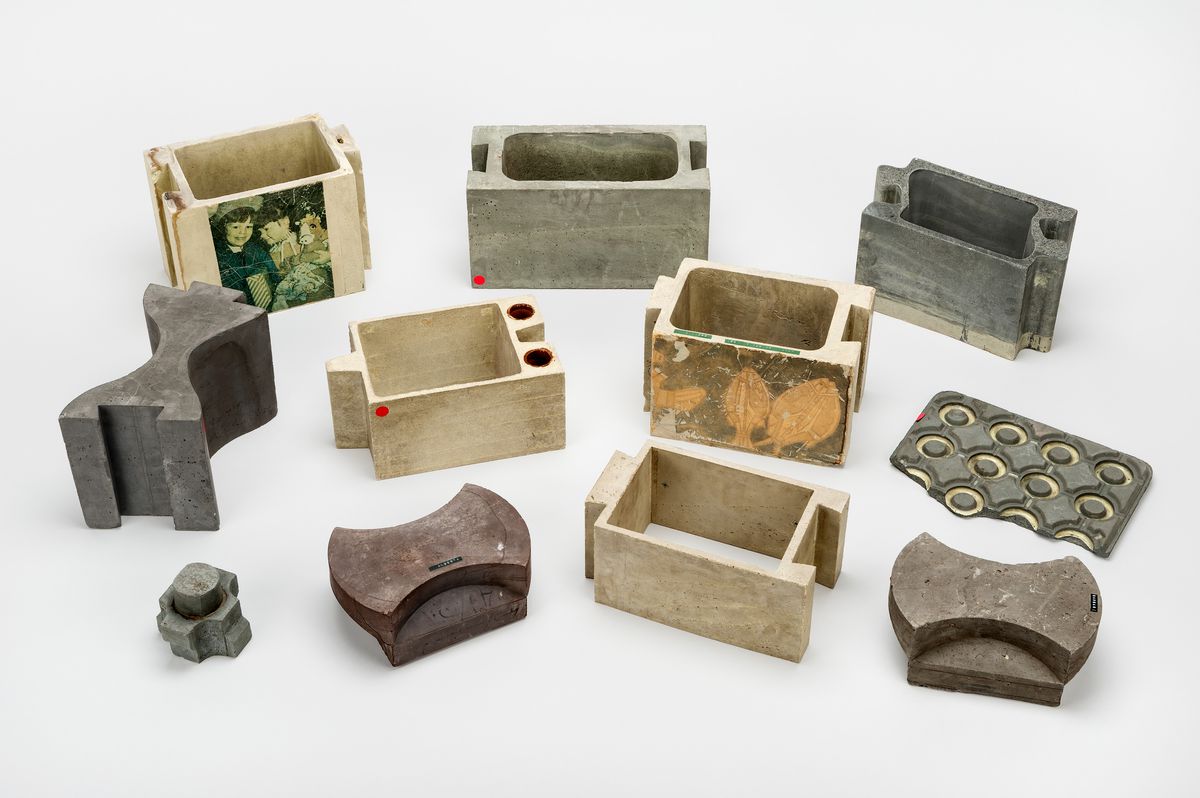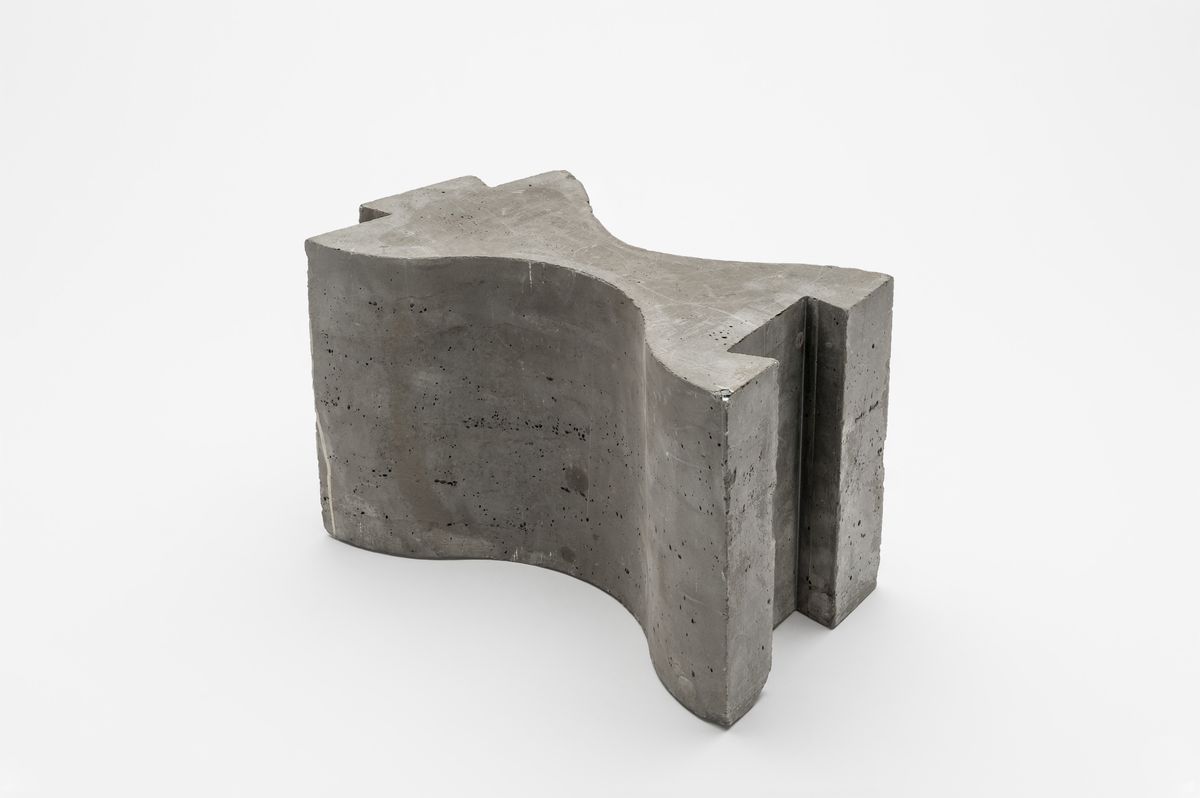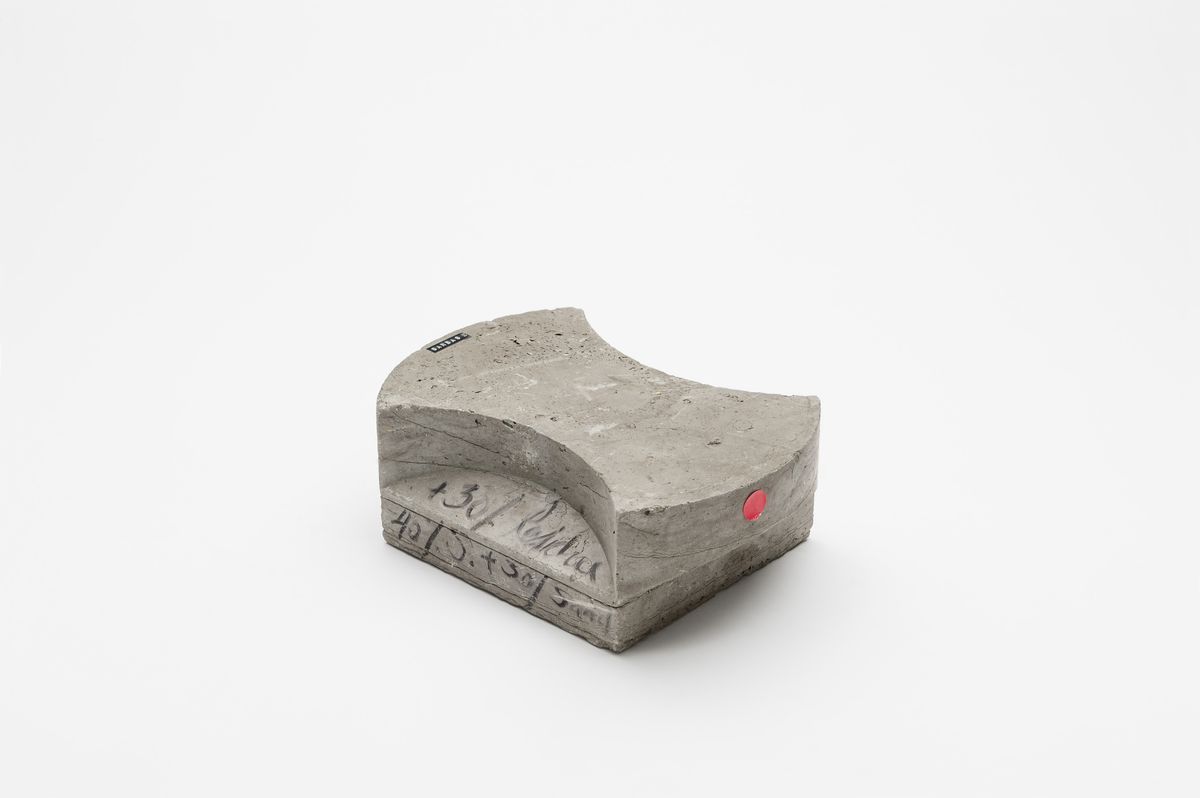Society of Friends of Sulphur
Sulphur concrete blocks made by the Minimum Cost Housing Group
Elemental sulphur, found in all volcanic regions of the world, has to date been used on a small-scale primarily for the production of organic and inorganic sulphur products. The last few years have seen a new “mining” of sulphur, as the petroleum industries, being required to de-sulphurize natural gas and petroleum, have become major sulphur producers (to the point where 30 percent of the world’s sulphur is produced in this way).
At the same time we have become aware of the finite capacity of the earth’s natural resources, and also of the finite capacity of the earth to absorb industrial waste. It is clear that one of the priorities is to reduce the amount of this waste by using materials which can be re-used. However, if we look at traditional building materials (brick, concrete, steel, aluminum, plastics) we find few which can be recycled without an excessive consumption of energy.
Sulphur, on the other hand, is extremely easy to recycle without expensive machinery, and the energy required to liquefy sulphur is small (30 kcal/kg).
Sulphur is a locally available material in many parts of the world, in industrialized countries it is, and will be for some time, in great supply, and it can be recycled. Furthermore it has some extremely good physical characteristics: high bonding strength, impermeability to water, good insulation value, and when mixed with a variety of aggregates (sand, gravel, earth, clay) it has compressive strength comparable to that of concrete.
Before we integrated our ideas and saw how sulphur performed in an actual house-building situation, we spent a year investigating this material and developing simple tools and techniques, in short a Sulphur Technology.
— Alvaro Ortega, Witold Rybczynski, Samir Ayad, Wajid Ali, and Arthur Acheson. Published in The Ecol Operation: Ecology + Building + Common Sense (Montreal: Minimum Cost Housing Group, School of Architecture, McGill University, 1972), 20.
Since its inception in the early 1970s, the Minimum Cost Housing Group (MCHG) at the School of Architecture at McGill Unversity has carried out research into low-cost housing and energy conservation around the world. In 1972, The MCHG researched sulphur concrete as a material for low-cost housing as part of its Ecol Operation. The project resulted in the construction of a low-cost house that included sulphur concrete blocks, rooftop solar stills, and a composting toilet. The sulphur blocks in our collection are part of the Minimum Cost Housing Group fonds.




















